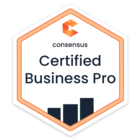Step 2 - Recording your first demo
The Basics of Recording Your First Video Demos for Customers to Understand Your Software
Recording your first video demo can seem daunting, but with the right approach, you can create engaging content that helps potential customers grasp the full value of your software. Below are steps and best practices to ensure your video demos are effective and compelling.
1. Plan Your Demo Content
Before recording, outline the key points you want to cover. Focus on:
- Target Audience: Understand who your viewers are and tailor your content to their needs and pain points.
- Key Features: Highlight the features that solve your audience’s problems or make their tasks easier.
- User Benefits: Emphasize how using your software will benefit them, increasing both efficiency and productivity.
2. Choose the Right Tools
Select high-quality software and equipment for recording. Recommended tools include:
- Screen Recording Software: Tools like Camtasia, ScreenPal, or Zoom can capture your screen and record your voice.
- Microphone: Use a good quality microphone to ensure clear audio.
- Webcam: If you plan to include a personal touch by appearing in the video, ensure your webcam is of decent quality.
3. Set Up Your Recording Environment
Create a quiet, well-lit space to conduct your recording:
- Lighting: Ensure your face and screen are well-lit. Natural light or softbox lighting can work well.
- Noise Reduction: Choose a quiet location and consider using noise-canceling software or a soundproof room.
- Background: Keep your background tidy and professional. Virtual backgrounds can also be a good option if needed.
4. Record Your Demo
With everything set up, proceed to record your demo:
- Introduction: Start with a brief introduction about yourself and what the demo will cover.
- Step-by-step Walkthrough: Guide viewers through each feature, demonstrating how it works and its benefits. Keep your narration clear and concise.
- Call to Action: End with a strong call to action, inviting viewers to try out your software, contact you for more information, or sign up for a free trial.
5. Edit and Enhance
After recording, use video editing software to polish your demo:
- Trim Excess: Remove any unnecessary parts to keep your video concise.
- Add Annotations: Include text annotations, arrows, or highlights to emphasize important points.
- Include Subtitles: Adding subtitles can make your demo more accessible and easier to follow.
Conclusion
Recording effective video demos is a powerful way to engage with potential customers and showcase the value of your software. By planning, recording, and optimizing your demos carefully, you can create compelling content that drives interest and conversions, ultimately helping your sales and presales teams achieve greater success.
Check out Step 3 for more!

